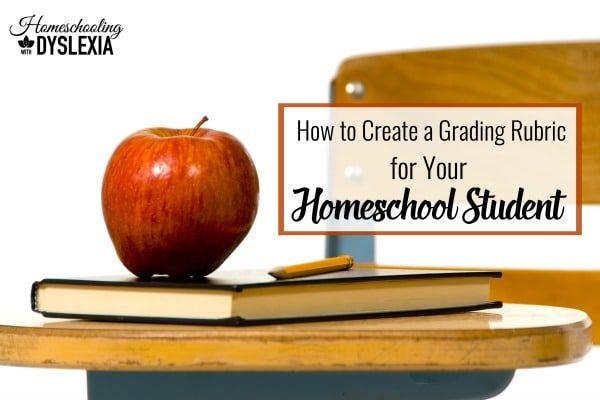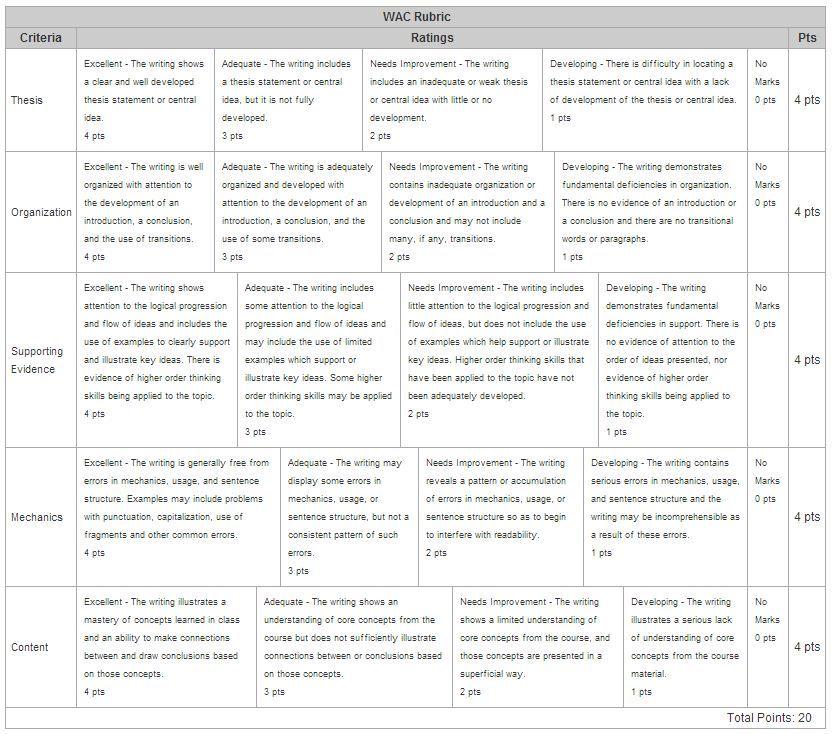Grading rubrics are a powerful tool for creating customized learning goals for students, especially those who are not up to grade level due to dyslexia. Learn how to create a homeschool grading rubric with this free template.
I received an email recently from a reader asking for tips on how to assign a grade to her dyslexic high school student who was not working up to ‘grade level’. He was working hard, but the end product was far from that of a traditional 16-year old. This is a common dilemma for homeschoolers. What this homeschooling mom needed was a grading tool that could be individualized for her unique student.
Creating your own unique grading rubric is a great solution to the ‘how to assign a grade’ dilemma.

What are Grading Rubrics?
Rubrics are not only a systematic way to establish grades for your homeschool student, they also are a great way to let students know exactly what is expected of them. They are a powerful tool for creating customized learning goals for students, especially those who are not up to grade level due to dyslexia, dysgraphia, dyscalculia, or other learning difficulties. Take a look at the Writing Rubric below for an example of how a rubric works.
Writing Rubric Example

Example rubric from www.alamoinstructure.com
How Grading Rubrics Work
A rubric is a scoring tool that lists the grading criteria for an assignment. These criteria are broken down into specific categories relevant to the assignment.
In the writing rubric example above, along the left-hand column, the assignment criteria are:
- Thesis
- Organization
- Supporting evidence
- Mechanics
- Content
Along the top of the rubric, there are also ratings, including points earned, for several levels of competency for each of the criteria:
- Excellent
- Adequate
- Needs improvement
- Developing
- No mark – criterion not attempted or completed
In the rubric example above, these ratings include a point score for each level which I really like. Points can be tallied and a grade given based on whatever scale you choose for your homeschool. For example: 90-100% = A, 80-89% = B, 70-79% = C, etc. Assigning a point value to each rating helps a student and parent to know exactly how to grade each aspect of the assignment.
How to Make Your Own Grading Rubric
- Make a list of what you want the students to accomplish through the assignment (criteria).
- Organize your list from most important to least important.
- Decide on an overall point value for the assignment.
- Assign each item on your ranked list a point value.
- Multiply your total point value from step 3 by each item’s assigned percentage to arrive at the point value for that item.
- On a fresh sheet of paper, write each criterion on your list in order from most to least important. Make sure to leave room in between each category.
- Assign specific grading criteria (i.e. what you expect them to do) for each main criteria from step six.
You can simply write your grading rubric on paper or type it if you’re proficient with a spreadsheet program. If you’re like me and spreadsheet programs make you break out in a cold sweat, you’re in luck.
Customizing Rubrics for Kids With Dyslexia
Back to the question from my reader with the high school-aged son who was ‘behind’ in his writing skills.
Note: I’m not a fan of the term behind. All of our kids are on a journey of learning and as long as they are making progress, I’m happy.
So if your child needs to make progress with writing a thesis statement, you can weight this criterion more heavily with your rubric. If your child still struggles with grammar, give that less of a percentage of the total grade. Or be super specific and focus on just one area of grammar such as capitalization and end marks or any other relevant goal that you may have.
A Note About Accommodations
The use of accommodations should not affect a student’s grade. Go ahead and allow any and all accommodations for your child. Accommodations for writing are things like using speech to text, not counting off for spelling, or having someone scribe for him. For more information on the best accommodations for kids with dyslexia, click here. Remember accommodations are used to allow students with learning difficulties to express themselves at their intellectual level. Students with dyslexia in public school are not marked off for the use of accommodations and neither should your homeschooled student.
Download my free, editable grading rubric here.
Get Your Grading Rubric

Download our free customizable grading rubric here!






This reason is exactly why I love LoE. I made rubrics all the time as a public school teacher. I knew what was most important and so did my students.
I didn’t realize this was a huge missing link in helping my dyslexic 6 year old. It never fails, we get to a review/assessment lesson and I find myself worrying that she hasn’t grasped the concepts well enough. However, when we look at the rubric and go through the lesson, she’s usually right on track. I wish our math curriculum had a similar structure.
Thank you so much for this. I was trying to figure out how to grade an essay period before I realized that I would need to make some sort of accommodations. This will be very helpful in our journey so thanks again!